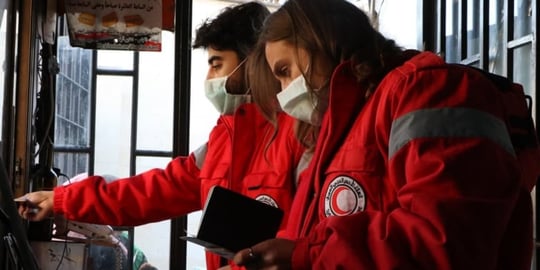
Sagittarius increases Billable Work by 40% with Forecast

Since the 1970s, Sagittarius has been providing performance-driven marketing services to its clients all over the world and for the last decade or so with a focus on the latest and greatest creative technology solutions. The agency is an established and trusted expert in Sitecore development, personalization, and CRO campaigns with 280 years of combined expertise in the marketing agency arena.
With more than 60 employees globally, Sagittarius is structured into smaller pods that are acting as “mini agencies,” where each distinct delivery team has a set amount of accounts they service and work on. This way of structuring the agency adds a lot of flexibility and access to the market, but as the pods grew in size and complexity it added a lot of pressure for management. Project managers had to spend a big chunk of their time in efforts to unite all projects under one roof, monitor their progress, and get visibility into associated operations.
We’ve spoken with Joanne Reid, the Head of Project Management Office about her role and how Forecast has helped the agency become more productive and increase billable work by 40%.
Searching for the transparency
Joanne is overseeing the portfolio of clients that every project manager at the individual pod level deals with. “I look at the delivery of projects and my role is really to improve the project management function”, she explains.
Project management is an important function because it impacts the whole business - if we don't deliver on what we’ve sold, then we won’t hit the goals with our clients, and if we aren't able to bill for that committed work, the business is not sustainable.
With a success metric to “hit or exceed the delivery targets”, Joanne was badly in need of the visibility into what was going on across all pods. She had to use several disparate tools and a number of spreadsheets to gain some kind of transparency into what was happening on the ground. Having more than 35 projects across 8 pods to supervise, every week each project manager would fill out a spreadsheet with information about the projects, which Joanne would use to calculate if they were on track or not.
I used to have seven individual spreadsheets. Merging them all in together, overlapping them, and seeing where the projects would go was a deadly time-consuming task for all involved. We never knew if the data was correct, because the process itself was too error-prone.
After implementing Forecast, the key thing we've accomplished is reducing the time my team would spend on admin tasks.

Being able to trust the data
In 2019, Joanne began to look into this ‘black hole’ of potentially wasted hours. Initially, the team feedback and complaints were about not having enough time, but she also noticed a trend across several months where certain team members were saying “they didn’t trust the budget data.”
If we're looking at making swift business decisions or to provide solutions through the utilisation of data, the tool must be both useful day-to-day and trusted by the teams who rely on it. We know that if this issue isn’t tackled head on, we will always be ‘fire fighting’ and not proactively planning for the future.
Since every department was using disparate systems, such as Jira, Tempo, Hawk Budget, together with spreadsheets, there was no single source of truth and eventually, management couldn’t rely on the data. It didn’t take long for Joanne to come to the conclusion that they had to find another solution that could unite the business and drive up confidence about the tool.
Obviously, we wouldn’t choose a platform that some people will use and some people won't. This time, it had to be consistent so that we all could move in the right direction.
Democratizing information across the entire business
Finding Forecast has been a lifesaver and not just for Joanne in finally stopping the daily grind of merging spreadsheets and treble-checking plans. It has also allowed every project manager in Sagittarius to cut down on time spent reporting and created real-time visibility into every corner of a live project.
Even though I'm reporting on a weekly basis, my CEO would ask me what the Studio’s utilization figures look like per week, month and quarter. The fact that you guys have a ‘zoom-in and zoom-out’ function is a dream of every project manager. Now I don’t have to put specific reports together for Board members - one press of a button and they can take a helicopter view through daily, weekly, monthly, and even yearly!
Previously, when senior management would meet weekly to discuss the pipeline, they would have to pull data from disparate systems. Today they just open the Schedule and the Project Portfolio in Forecast. “Now if I go on holiday, I don't feel like the world stops, because everything is up-to-date,” Joanne says smiling.
We always wanted to do scheduling that demonstrates how every project fits into the existing portfolio, but because we never connected multiple project plans, we were never able to get an accurate overview unless it was manually arranged and analyzed.
With the current setup in Forecast, the entire agency now has confidence in the numbers and benefits a lot from the transparency into every part of the projects. In addition, the platform has provided Sagittarius with the ability to have data available at their fingertips in a format that can easily be understood.
Every employee can now readily differentiate between project and non-project work. We’ve never had that before. It’s a true moment of singularity. We’ve never had a platform that everybody in the business uses for their own specific needs.
Decreasing administrative time by more than 50%
Searching for a solution to decrease wasted hours and increase effectiveness while enabling everyone to trust the data, Joanne is now happily looking at her team that has been able to cut down on administrative work and reach their goals.
After implementing Forecast, the key thing we've accomplished is reducing the time my team would spend on admin tasks. Previously they could easily spend up to 50 hours per month, whereas now they are averaging no more than 22 hours.
In the past, the agency was invoicing a little over half of their hours. The clients never paid for wastage but it affected the agency’s financial performance on their projects significantly, but with Forecast Sagittarius was able to align efforts with invoicing.
Historically, as a PMO team, we could only log 60% of our time as billable. Now we're at about 85% to 90% and it’s all activity that benefits the client first and foremost.
But the success after implementation didn’t stop there. Each week the team is hitting their targets. The project management office targets a set number of billable hours per week and per month and the new increase in transparency has helped them come close to doubling results.
Keeping the agency in tune
Sagittarius values that Forecast has a customer-centric approach when it comes to building and developing new features. Since they became Forecasters, they’ve experienced updates to the existing features that made their daily activities easier. When approaching the new releases, they are trying to be as inclusive as possible, ensuring every team member in the agency gets all the information, simply to be able to use the platform to its fullest potential.
Joanne ends with a small call out to every agency:
I would say that Forecast feels like it was made for us. I’ve worked in various agencies before, all with different models, but would definitely say it can solve a lot of your problems. The key when choosing a new system is to really assess what problems you’re wanting to solve. Out of the box, Forecast is truly amazing.

More Customer Stories

Red Cross manages some of the world's most complex projects with Forecast
Learn how
Kvantum improves Client Communication with Forecast's Retainer Management
Learn how